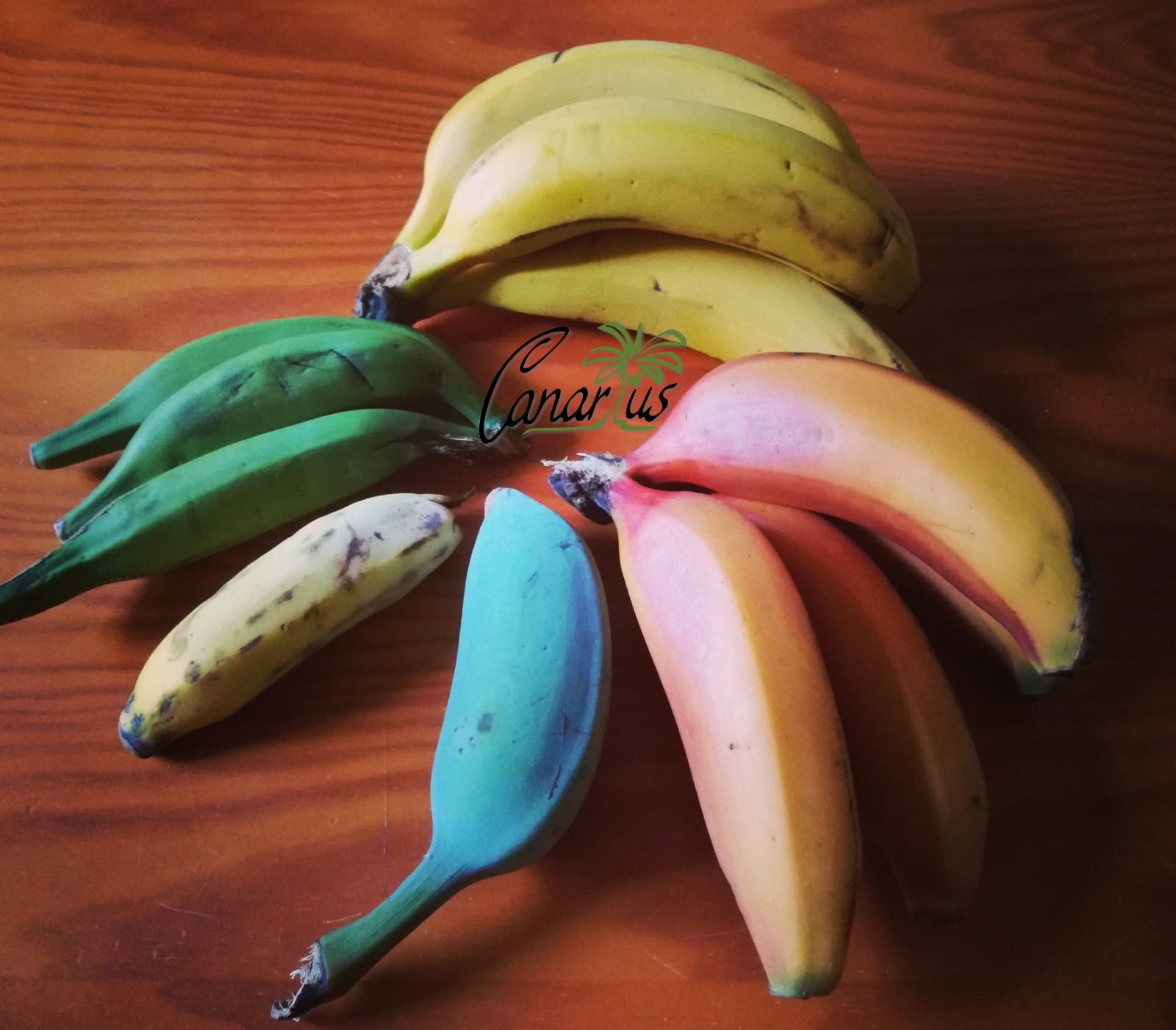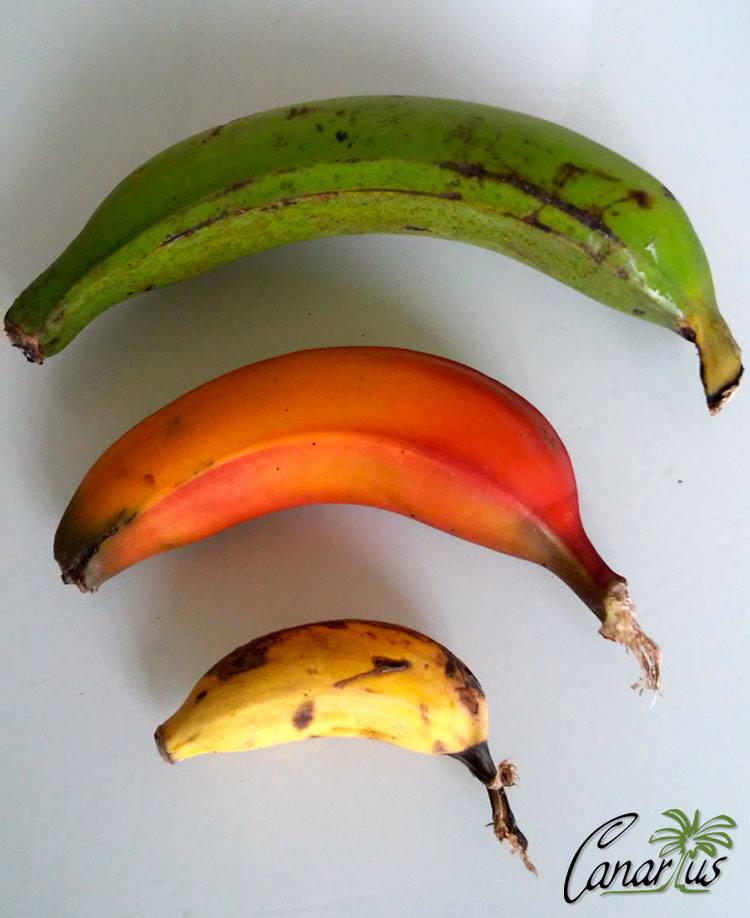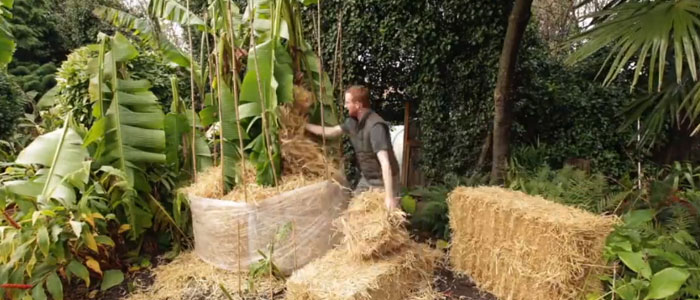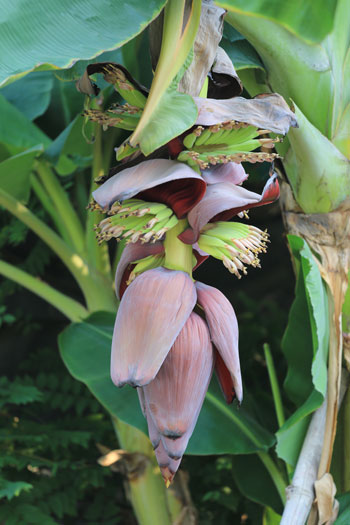We took this picture in June 2018 in order to show the incredible diversity of bananas that we pick in our nursery. We grow more than 80 different cultvars, with different tastes, shapes and colours, with the aim of producting quality suckers for our webshop.
The bananas that we put on our wooden bench for this pircture belong to the following cultivars, clockwise: Cavendish, Dwarf Red (Figue Rose), Blue Java, Rajapuri and Monkey Fingers.
Cavendish is the most widespread yellow banana of the world trade. Dwarf Red , or Figue Rose, is the most common red-skinned banana. Blue Java, Rajapuri and Monkey Fingers are non-commercial bananas, only grown on a small scale or in family backyards for their great taste.
When we post for the frist time this photo, in our facebook page we reached in a few days 12k people. An astonishing record.
You can check the original photo in our facebook page .
We sell the plants of all these bananas through our website www.canarius.com. If you want to go straight to our BANANA SECTION click the link.



















